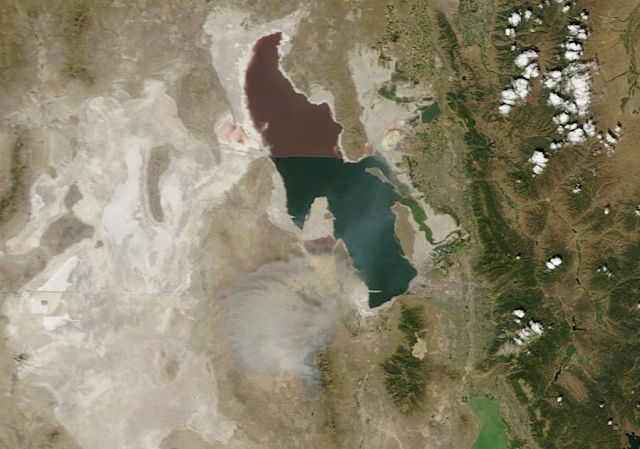 |
| Carnac the Magnificent, as played by Johnny Carson |
Editor's Note: Special thanks to Jeff Massey for his contributions to this post
Will this be a below average, average, or above average snow year in the Wasatch Range? We're sure you can find someone who will give you an answer. Here's what the Wasatch Weather Weenies have concluded:
WE HAVE NO IDEA!
The primary modulator of year-to-year precipitation variations over western North America is the El Nino–Southern Oscillation, commonly abbreviated to ENSO. All indications are that this year will feature neither El Nino conditions (i.e., a warm tropical eastern Pacific) nor La Nina conditions (i.e., a cold tropical eastern Pacific). In other words, this will likely be a neutral year.
El Nino, La Nina, or neutral, it really doesn't matter. Although El Nino or La Nina can weight the odds for snowfall relative to average in other parts of the western US, in the Cottonwoods and probably the Wasatch Range as a whole, there simply isn't a strong relationship. This is also the case in neutral years. For example, in the plot below, three-month snowfall accumulations at Alta-Guard (obtained from the Utah Avalanche Center web site) are compared to the corresponding three-month Oceanic Nino Index (ONI, obtained from the NOAA/Earth System Research Lab), a measure of the strength of ENSO. Although there is e a slight slope of the linear trend line, it's pretty minimal and largely meaningless given the scatter in the data. The bottom line is that there's very little relationship between snowfall and ENSO at Alta.
 |
| Three month (NDJ, DJF, JFM, FMA) accumulated snowfall at Alta–Guard vs. the corresponding ONI (labeled ENSO index). Courtesy Jeff Massey. |
How about a different perspective. Instead of looking at three-month snowfall, how about we look at the seasonal (November to April) snowfall and categorize that based on the ENSO phase during December–February when El Nino or La Nina tend to be strongest. We'll plot this up using box-and-whisker plots with the red line indicating the median snowfall (i.e., half of the seasons are above this line and half are below), the top and bottom of the blue box indicate what is known as the interquartile range (i.e., 50% of the seasons lie between the top and bottom of the box), and the whiskers showing the extremes (i.e., 90% of the seasons lie between the whiskers). Again, the differences here are not very large. Even for strong La Nina or El Nino years there isn't much difference relative to neutral, although one might be able to argue that there is a greater range of possibilities in a neutral year.
 |
| Seasonal (Nov–Apr) Snowfall vs. DJF ENSO conditions. Courtesy Jeff Massey. |
So, the bottom line is that your guess is as good as ours as to whether or not we will have a below average, average, or above average snow year. However, it's important to remember that Alta's average is 500". A bad year here is better than a good year in many other areas. As can be inferred from the plot above, you have about a 75% chance of 400" or more at Alta in a neutral winter. There are few places on the planet that provide those kinds of odds, a midlatitude sun, and high quality snow.















































